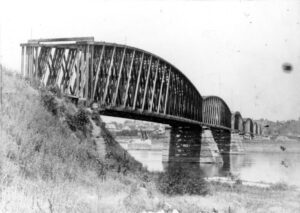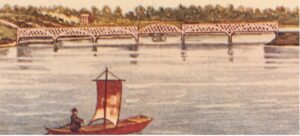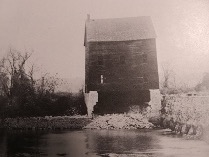
A parchment map of Rock Island Arsenal shows government property, Waterpower and Fort Armstrong, drawn in 1859 and included with the 1861 Appeal to Congress. Image courtesy of the RIA Museum.
After losing the battles of nearby Credit Island (to the west) and Campbell’s Island (to the east) during the War of 1812, the American government established Fort Armstrong on Arsenal Island, which was completed in 1816. This new fort protected trade and established a federal government presence in the region. Additionally, it would serve as a supply depot during the Black Hawk War in 1832.
After Black Hawk’s defeat in 1832, the Army abandoned the site as their efforts required forts further to the west. George Davenport, for whom the city of Davenport would be named, built a large home on Arsenal Island, which still stands today.
Davenport would also go on to spearhead the creation of the first railroad bridge across the Mississippi River, which was completed after 11 years of construction in 1856.
During this period, many other folks lived and worked on Arsenal Island, too. For instance, Sears built a waterpower-reliant mill through a small channel on the eastern tip of the island. On your Channel Cat tour today, you will actually pass through this channel on your way to the port in downtown Moline.





